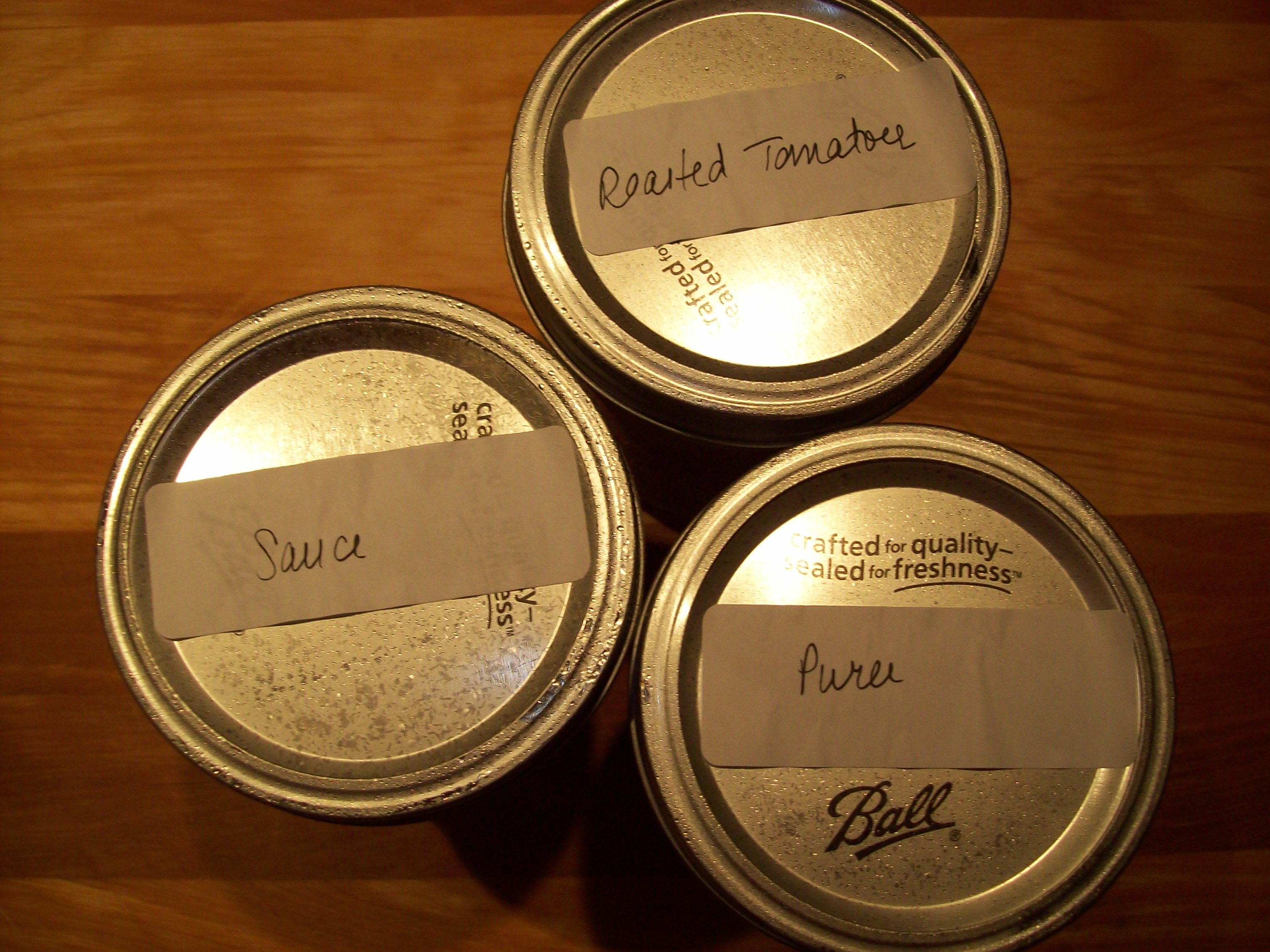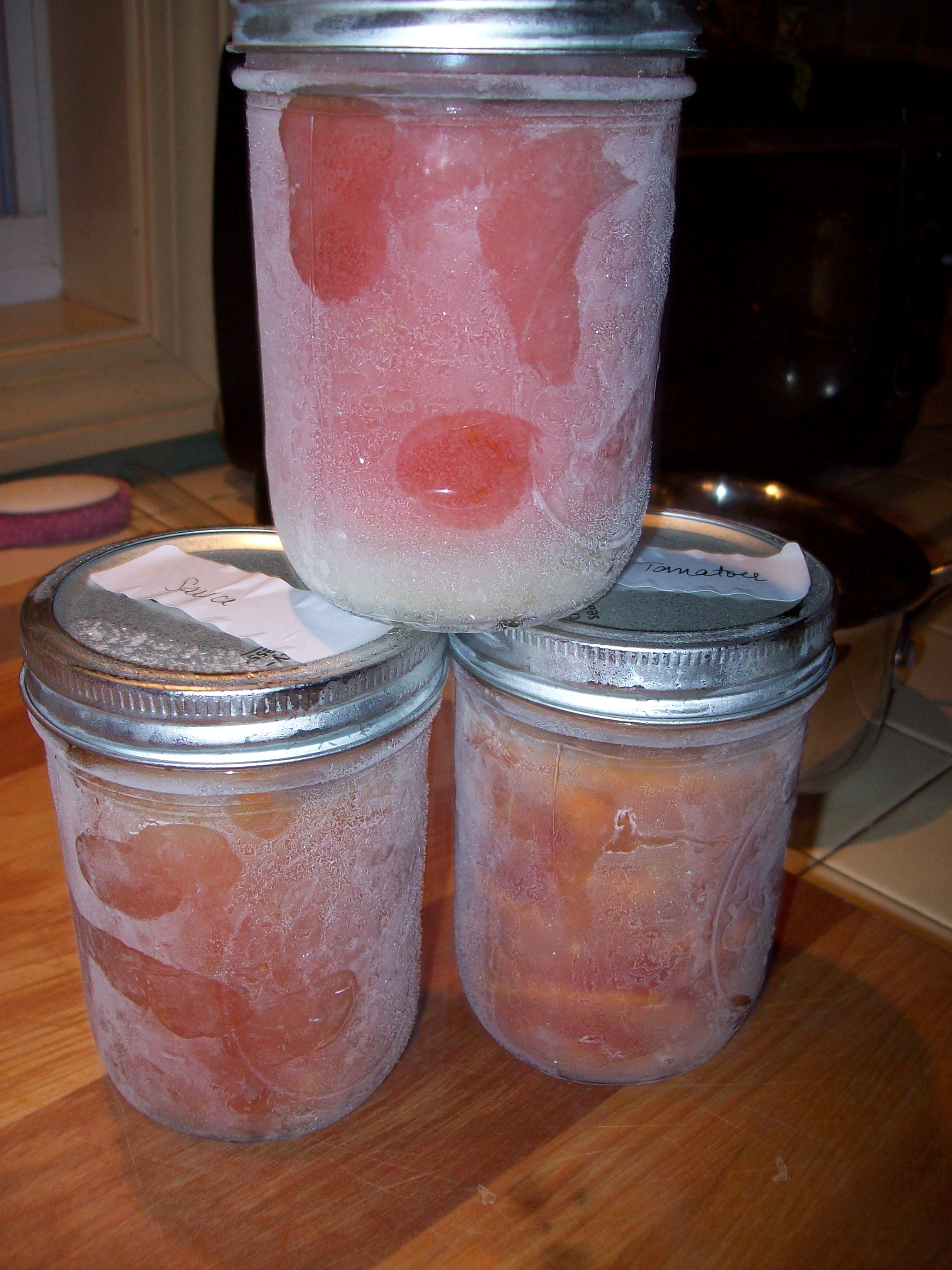Let’s be honest, kids. We’re all just in this summer produce thing for the tomatoes, right?
There’s an unmistakable difference between ANY fresh, in-season produce, and its evil doppelganger, the out-of-season grocery-store version. However, I know I can’t be alone in saying that I find there to be much less of a difference between, say, Farm Zucchini and Evil Zucchini than there is between Farm Tomato and its absolutely heinous, unthinkable counterpart, Evil Tomato.
Farm Tomato is juicy and sweet and heady. Evil Tomato is mealy and orange-ish. Farm Tomato tastes like sunshine. Evil Tomato tastes mainly like water. Farm Tomato needs nothing, absolutely NOTHING, to make it dance on your plate; Evil Tomato can’t even be revived with generous amounts of salt and really good olive oil. There is no purpose to purchasing and eating Evil Tomato, because much like the Dementors from “Harry Potter,” Evil Tomato’s one goal is to suck all the tomato joy out of the world.
How to fight the forces of evil? Preserve what you can, while you can, friends. Preserve as if your very tomato-eating lives depended upon it.
There are numerous things you could do with your tomatoes – too numerous, actually, to set down here. Most of them allow you to mix the tomato love with other vegetables to make yourself some darned tasty freezer sides, like the ratatouille I recommended to you when we talked about preserving your zucchini, or the green beans and tomatoes I described in the same post, when we were on the subject of beans. You could also do something completely radical and make tomato muffins (or a loaf), which I haven’t done in ages, but is a wonderful unusual use for your summer friends (and will freeze perfectly). But sometimes, you’re going to just want some TOMATOES, in their own glory, as un-fooled-with as possible. Here are four ways to do that.
Simple puree. You know what’s ridiculously easy? Throwing tomatoes in a blender/food processor. Oh, sure, you could seed them and peel them and all of that beforehand, but why would you want to? I try to avoid peeling tomatoes at all costs, since even with the best of tomato-peeling tricks, it’s a thankless chore. I chunk up my tomatoes just as they are and whiz them up into a smooth puree, then stick it in jars and freeze it. It works fine in recipes and saves me lots of time and effort.
Marinara sauce. Take some of that simple puree and cook it up into sauces you’ll eat all winter long. The best ratio I’ve found is this:
For every 2 cups of puree, you want:
1 tablespoon of olive oil
1-2 cloves of minced garlic (depending on your garlic tolerance)
1 tsp. salt
½ tsp. dried oregano
½ tsp. dried basil (I don’t use fresh for things I plan to freeze – I find it gets slimy)
1/8 tsp. crushed red pepper flakes
¼ cup red wine OR 2 tblsp. Balsamic vinegar (Optional, but I find it really deepens the flavor of the tomatoes)
That’s it. You’ll sauté the garlic in the olive oil until it’s soft, then add everything else and cook it down for about 40 minutes. If it seems too watery, boil more aggressively to get some of the water content out.
Roasted Tomatoes. These little gems are gorgeous. They’re perfect for just tossing with pasta or risotto on their own, pairing with roast meats, or stirring into macaroni and cheese. They’re amazing in omelets and they’d make a killer fancy aioli for sandwiches. You should start with plum tomatoes or some close cousin, though – I used Juliet tomatoes from my favorite farm, which are like smaller plums. Just cut the little suckers in half lengthwise, toss with olive oil, salt, pepper, a few cloves of roughly chopped garlic, and a tiny sprinkle of sugar (yes, really – it brings the whole thing together), and roast at 400 degrees for about 20-25 minutes, cut sides down. The skins will blister and come loose, and the tomatoes will be soft and succulent but still hold their shape. Let them cool slightly and then just remove the skins, which ought to peel off with no effort at all. When you freeze the tomatoes, pour a little of the pan juices over the top.
Oven-dried tomatoes. Sundried tomatoes are super expensive, but oven-drying your own can be really cost effective in the summertime. Again, if you can, start with plum tomatoes – but if you can’t, any old tomato will theoretically do. Cut the plum ones in half OR larger ones in quarters or eighths and gently squeeze out the seeds. Lay them out on a baking sheet in a single layer and bake them at 250 for, oh, anywhere from 2-4 hours, depending on your oven. You’ll want to keep checking on them to make sure they’re not burning to a crisp. When they’re dry and shriveled like sundried tomatoes, put them in jars and cover with olive oil. They’ll keep in the fridge for several weeks like this, but they also freeze perfectly! I recommend freezing in half-pint jars for the perfect portions.
Now, for something REALLY special, come back tomorrow for a guest post by my amazing sister, D. Lots of people have asked me questions about canning their produce like real people do, and of course I’m no canning expert. Luckily, D. is! She’s put together a wonderfully informative piece on the basics, along with her three absolute favorite summer canning recipes. (Teaser: One of them is referred to, in our family, as “The Crack,” which should tell you how good these recipes really are.) Check back tomorrow for D.’s helpful advice!



I love to do my roasted tomatoes with thyme, along with olive oil, salt and pepper…it complements the sweetness really nicely.
Oh, good point! I love them with thyme, too. I don’t always do that because i like the blank slate when I pull them out of the freezer, but you’re absolutely right that it’s a wonderful addition!
Evil Tomato or Farm Tomato, Love it!!!! 🙂 When someone tells me they don’t like tomatoes I tell them they have never had a Real Tomato! Thank you for the great ideas. I have never tried to freeze them, we’ve always canned.
You’re so welcome! If you’re a canner, I bow to your superior skills. 🙂 Freezing works great for us mere mortals!
Lol! I am definitely in the mere mortal catagory! Grown, married women & I still need my mother to help me with canning! I just can’t bring myself to attempt without her 🙂
[…] to be less heavy (and so do my jeans). I want food that tastes of summer, and if I can’t have Farm Tomatoes yet, then the grill it shall […]